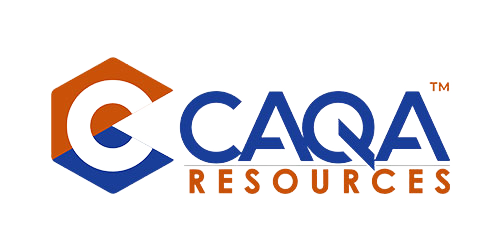As of September 1, 2024, Queensland has implemented significant changes to its Work Health and Safety Regulations, focusing on the management of psychosocial risks arising from sexual harassment and sex- or gender-based harassment. These new regulations represent a crucial step forward in creating safer, more inclusive workplaces across the state. This article provides a detailed examination of these changes, their implications for businesses, and strategies for effective implementation.
Understanding the New Regulations
The updated regulations place a greater responsibility on persons conducting a business or undertaking (PCBUs) to actively manage and mitigate risks related to sexual harassment and sex- or gender-based harassment. This shift reflects a growing recognition of the serious impact these issues can have on worker well-being and organisational culture.
Key Considerations for PCBUs
When determining appropriate controls to manage these risks, PCBUs must now take into account:
- Worker Characteristics:
- Age
- Gender
- Sex
- Sexual orientation
- Disability
- Workplace and Work Environment Factors:
- Potential for a workplace culture that permits unacceptable or inappropriate behaviour
- Lack of diversity in the workplace or in decision-making positions
- Any other relevant environmental factors that may affect behaviour towards workers
Practical Examples
To illustrate how these factors might be applied, the regulations provide several examples:
- Age and Gender Dynamics: In a workplace where a younger worker's sex differs from the majority of other workers who are of a similar age, this demographic disparity becomes a relevant consideration in risk assessment.
- High-Risk Work Environments: In settings such as hotels, where patrons may be affected by drugs or alcohol, the work environment itself becomes a significant factor in assessing potential risks.
- Employment Status Disparities: The power dynamic between a casual or part-time worker and their permanent staff supervisor is recognised as a potential risk factor.
The Purpose Behind the Changes
These new regulations are designed to ensure that PCBUs conduct a thorough and specific analysis of their unique work environments. By focusing on the particular risk factors present in their workplaces, businesses can develop more targeted and effective strategies to prevent and address harassment.
Prevention Plans: A New Requirement
Starting March 1, 2025, Queensland businesses will face an additional requirement: the preparation and implementation of a prevention plan. This plan must be a written document that outlines the organisation's approach to addressing psychosocial risks related to sexual harassment and sex- or gender-based harassment.
Key Components of the Prevention Plan
- Risk Identification: A comprehensive assessment of potential risks specific to the workplace.
- Control Measures: Detailed description of the controls in place to mitigate identified risks.
- Consideration Factors: Explanation of the factors taken into account during the risk assessment process, including how the consultation was conducted.
- Reporting Procedures: Clear guidelines on how incidents can be reported within the organisation.
- Investigation Process: Outline the steps to be taken when investigating alleged incidents.
- Issue Resolution: Description of the process for resolving disputes and addressing issues related to harassment.
Review and Maintenance
The prevention plan is not a static document. It must be reviewed:
- Every three years
- Following any reported incident
- Upon request from a health and safety representative or committee
This regular review process ensures that the plan remains relevant and effective in addressing evolving workplace dynamics and risks.
Implications for Queensland Businesses
These new regulations represent a significant shift in how businesses are expected to approach workplace safety, particularly in relation to psychosocial risks. The implications are far-reaching:
- Increased Responsibility: PCBUs now have a more explicit duty to proactively identify and manage risks related to sexual harassment and sex- or gender-based harassment.
- Cultural Shift: The regulations encourage a more holistic view of workplace safety, recognising the importance of psychological well-being alongside physical safety.
- Resource Allocation: Businesses may need to allocate additional resources to conduct thorough risk assessments, develop prevention plans, and implement new control measures.
- Training and Education: There will likely be an increased need for staff training on recognizing, reporting, and preventing harassment.
- Potential for Legal Scrutiny: With more specific regulations in place, businesses may face greater scrutiny and potential legal consequences if they fail to adequately address these risks.
Strategies for Effective Implementation
To successfully implement these new regulations, businesses should consider the following strategies:
- Conduct a Comprehensive Risk Assessment
- Engage with employees at all levels to identify potential risk factors
- Consider both obvious and subtle forms of harassment
- Pay particular attention to power dynamics and workplace culture
- Develop a Robust Prevention Plan
- Involve key stakeholders in the planning process
- Ensure the plan is clear, accessible, and easily understood by all employees
- Include specific, actionable steps for prevention and response
- Implement Effective Reporting Mechanisms
- Create multiple channels for reporting incidents
- Ensure confidentiality and protection against retaliation
- Train staff on how to use these reporting mechanisms
- Provide Comprehensive Training
- Educate all employees on what constitutes harassment
- Train managers and supervisors on how to recognise and address potential issues
- Conduct regular refresher courses to reinforce key messages
- Foster an Inclusive Workplace Culture
- Promote diversity at all levels of the organisation
- Encourage open communication about workplace issues
- Lead by example, with management demonstrating respectful behaviour
- Regularly Review and Update Policies
- Conduct periodic reviews of the prevention plan and related policies
- Stay informed about best practices and emerging issues in workplace harassment prevention
- Seek feedback from employees on the effectiveness of current measures
- Establish Clear Investigation Procedures
- Develop a step-by-step process for investigating reported incidents
- Ensure investigations are conducted promptly, thoroughly, and impartially
- Communicate the outcomes of investigations appropriately while maintaining confidentiality
- Implement Appropriate Control Measures
- Based on the risk assessment, implement controls tailored to your specific workplace
- This may include changes to physical layouts, work schedules, or communication protocols
- Regularly assess the effectiveness of these controls and adjust as necessary
- Engage with External Resources
- Consider partnering with organisations specialising in workplace harassment prevention
- Utilise resources provided by government agencies and industry associations.
- Stay informed about legal developments and best practices in this area
- Monitor and Evaluate
- Regularly collect data on incidents, reporting rates, and resolution outcomes.
- Conduct anonymous surveys to gauge employee perceptions of workplace safety.
- Use this information to continuously improve prevention and response strategies.
Challenges and Considerations
While these new regulations represent a positive step towards safer workplaces, they also present some challenges:
- Small Business Impact: Smaller businesses may find it more challenging to allocate resources for comprehensive risk assessments and prevention plans.
- Balancing Privacy and Transparency: Organizations will need to navigate the delicate balance between maintaining confidentiality in investigations and providing transparency in their processes.
- Addressing Subtle Forms of Harassment: Identifying and addressing less overt forms of harassment may require more nuanced approaches and training.
- Changing Established Cultures: In some industries or workplaces, shifting long-standing cultural norms that may have tolerated inappropriate behaviour can be challenging.
- Intersectionality: Recognizing and addressing the complex interplay of various identity factors (such as race, gender, and sexuality) in harassment situations requires a sophisticated understanding.
The Broader Impact
These regulations have the potential to create significant positive change beyond just compliance:
- Improved Workplace Culture: By addressing these issues head-on, businesses can foster more respectful, inclusive work environments.
- Enhanced Productivity: Safer workplaces free from harassment can lead to increased employee satisfaction, retention, and productivity.
- Reputation Management: Companies that effectively implement these regulations may see improved public perception and become employers of choice.
- Legal Risk Mitigation: Proactive management of these risks can help businesses avoid costly legal issues and reputational damage.
The new Work Health and Safety Regulations in Queensland represent a significant step forward in addressing the serious issue of workplace harassment. By requiring businesses to take a more proactive, comprehensive approach to managing psychosocial risks, these regulations have the potential to create safer, more inclusive work environments across the state.
Successful implementation will require commitment, resources, and a willingness to engage in honest self-assessment and cultural change. However, the benefits – both to individual workers and to businesses as a whole – are substantial. As Queensland leads the way with these regulations, it sets an example that other jurisdictions may follow, potentially heralding a broader shift in how workplace safety is conceptualized and managed across Australia.
For Queensland businesses, the time to act is now. By embracing these new regulations and going beyond mere compliance to truly prioritise worker wellbeing, organisations can position themselves at the forefront of workplace safety and inclusivity. In doing so, they not only meet their legal obligations but also contribute to building a more equitable and productive work environment for all.


































